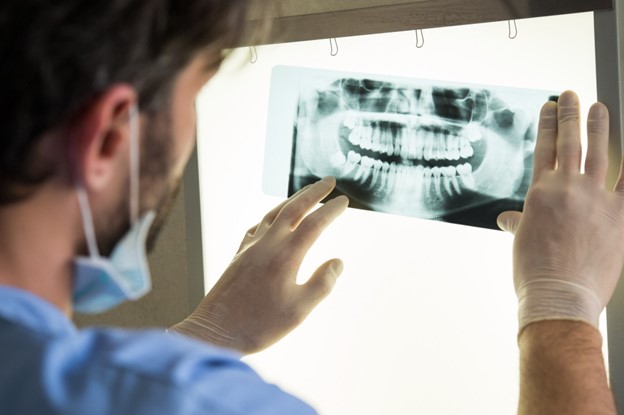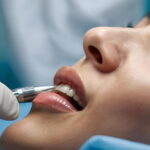A lot of people have missing teeth and don’t even know it. Sometimes, a tooth may be chipped or damaged without you knowing. Over time, you notice that one tooth is different from its neighbors.
When this happens, it’s essential to find a quick solution. If you don’t take action, your jaw will begin to change. This will cause additional problems down the road.
So, if you want to help “fill the gap,” read on. This article will discuss several options to help you choose the best solution for replacing a missing tooth.
Implant-Supported Bridge
This secures the bridge, providing a stable and long-lasting solution for a missing tooth. The procedure involves surgically placing the implants into the jawbone, allowing them to fuse with the bone over time.
A customized bridge is attached once the implants are fully integrated, providing a front tooth replacement. This option not only restores the aesthetics of your smile.
It also helps maintain proper chewing function and prevents bone loss in the jaw. With an Implant-Supported Bridge, you can confidently fill the gap in your smile and enjoy its many benefits.
Dental Implants
A dental implant is surgically placed into the jawbone as artificial tooth roots. This not only fills in the gap left by the missing tooth but also prevents bone loss and maintains the structure of the jaw. The process involves multiple stages, including a healing period for the implant to fuse with the bone.
Once fully integrated, a custom-made crown is placed on top, giving the appearance and function of a natural tooth. Dental implants in Vancouver WA can last a lifetime with proper care, making them a worthwhile investment for a complete and healthy smile. Google “the best dentist near me” and seek consultation to assess whether dental implants are the right solution for restoring missing teeth and improving oral health for you.
Tooth Supported Bridge
A popular option for this is a tooth-supported bridge. This type of bridge uses the neighboring teeth to support the replacement tooth, creating a natural and seamless replacement.
The process typically involves preparing the neighboring teeth. This removes a small amount of enamel and takes impressions to create a custom-fit bridge.
With proper care and maintenance, a tooth-supported bridge can last many years. It provides a durable and aesthetically pleasing solution for a missing tooth.
Flipper
This can be a cost-effective and non-invasive option for replacing a missing tooth. This custom-made prosthetic comprises one or more artificial teeth attached to a pink gum-colored plastic base. It fits snugly over the gums and remaining teeth, providing a natural-looking replacement.
It not only restores your ability to chew and speak properly but also prevents adjacent teeth from shifting and causing further dental problems.
Removal Partial Dentures
These artificial teeth can be easily removed for daily cleaning and replaced in the mouth. This solution not only restores the appearance of a complete smile but also helps maintain proper chewing and speaking functions.
With proper care and regular visits to the dentist, the removal of partial dentures can last for many years, providing a comfortable and natural-looking solution for missing teeth.
Follow This Guide to Replace a Missing Tooth
In conclusion, replacing a missing tooth may seem daunting, but it can be a smooth process with the proper knowledge and guidance. By following the steps outlined in this guide, you can fill the gap in your smile and restore proper function to your mouth. Don’t let a missing tooth hold you back any longer; take action and schedule a consultation with your dentist today.
To learn more helpful tips, be sure to follow us!
Read Also
- The Future of Men’s Health: Why Telehealth Is Here to StayTelehealth isn’t just a pandemic trend that faded into the background. For Australian men, it has become one of the most practical, time-saving, and stress-free ways to manage everyday health — and it’s shaping the future of how we access care. Platforms like DOCTO, an Australian online doctor and specialist telehealth service, are leading the… Read more: The Future of Men’s Health: Why Telehealth Is Here to Stay
- How to Build a Simple, Clean Skincare Routine ?You don’t need a complicated skincare routine. It doesn’t have to be something that requires twenty different products and confusing steps. Your routine works well with just a few high-quality clean ingredients. The beauty industry keeps pushing more products, but your skin actually needs less. You only need a simple approach to get better results… Read more: How to Build a Simple, Clean Skincare Routine ?
- How Preventive Dental Care Supports Overall HealthHave you ever wondered how a simple dental checkup could impact your entire body? Oral health is more than just a bright smile. Studies show that poor dental habits can contribute to serious health problems. Gum disease and tooth decay are linked to heart disease, diabetes, and infections. Yet, many people overlook preventive dental care.… Read more: How Preventive Dental Care Supports Overall Health
- Seeing Clearly in a High-Tech World: A Deep Dive into Advanced Vision Care ServicesProtecting your eyesight isn’t optional—it’s essential. Modern eye care has evolved far beyond basic exams, offering advanced diagnostics, personalized treatments, and surgical innovations that keep vision sharp for life. A leading example is Intermountain Eye Center, home to specialists like Dr Fishburn Boise, where patients receive comprehensive, high-level vision care designed to preserve long-term eye… Read more: Seeing Clearly in a High-Tech World: A Deep Dive into Advanced Vision Care Services
- Why the Keto Diet Works for Some People—and Fails Dramatically for Others: An Ayurvedic Breakdown for Modern HealthcareThe keto diet has dominated weight-loss culture for years. For some people, it produces rapid fat loss, stable energy, and improved mental clarity. For others—especially those who gain weight easily—it leads to burnout, digestive distress, rebound weight gain, high cholesterol, and a metabolism that feels slower than before. Healthcare often frames this as a discipline… Read more: Why the Keto Diet Works for Some People—and Fails Dramatically for Others: An Ayurvedic Breakdown for Modern Healthcare






